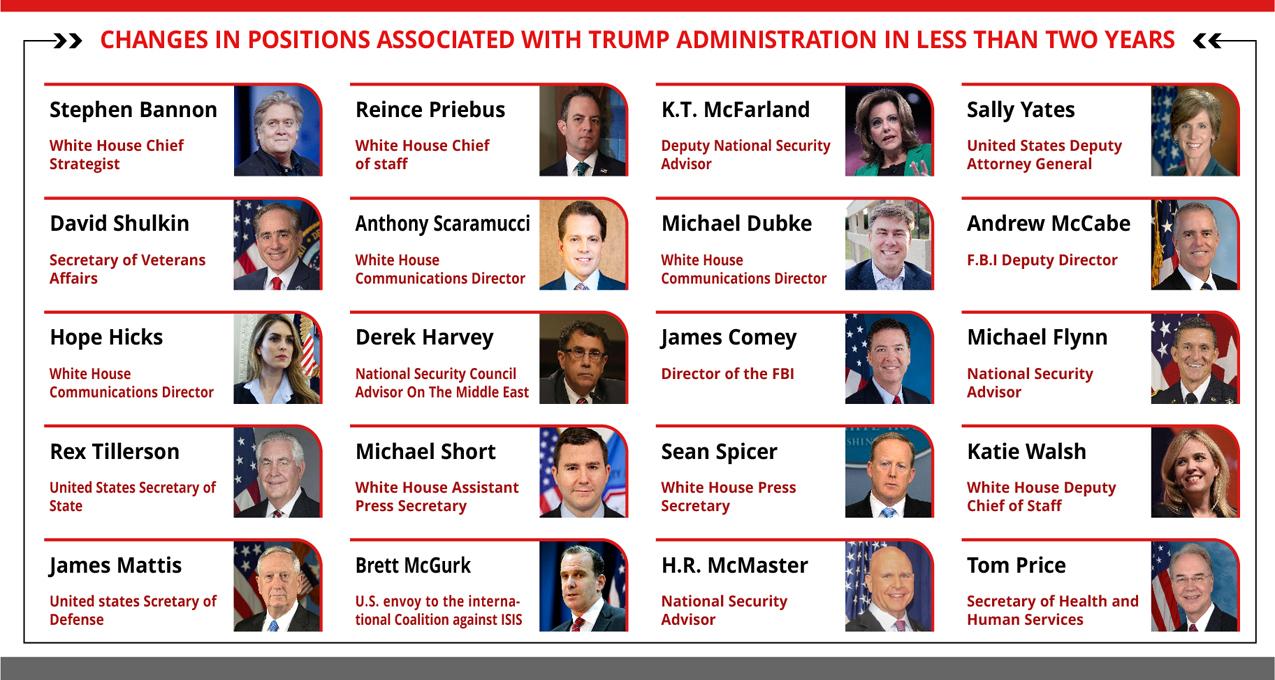The U.S. Foreign Policy
The Strategic Dimension of the U.S. Foreign Policy
Does the United States, represented by President Trump’s decisions, rely on a realistic strategy that shows the U.S. course of action, opportunities, strengths, and threats? This question has become most significant after President Donald Trump took office in January 2017 and began to announce his decisions and directions. This article, therefore, discusses several justifications and analyses for the existence of a clear U.S. strategy.
by Hazem Salem Dmour
- Publisher – STRATEGEICS
- Release Date – Feb 28, 2019

After President Donald Trump took office in January 2017 and began to announce his decisions and directions, particularly during the second half of last year, an important question has been raised at all the political levels not only in Washington but also the capitals of global decision and capitals of other partner or opposing states. The question is: Does the United States, represented by President Trump’s decisions, rely on a realistic strategy that indicates the U.S. course of actions, opportunities, points of strength, and threat? Or does the U.S. administration address each file separately without what is known as the "Grand Strategy"?
There are several indications of such volatility and uncertainty; the high-ranking positions that are directly associated with President Trump have seen several changes in the last period (see picture below) the recent of which were the departures of the Secretary of Defense John Matisse and Brett McGurk due to the dispute over the U.S. military withdrawal from Syria.

There are three perspectives within Washington regarding the U.S. foreign policy strategy. First, some believe that the United States adopts a policy of reactions and volatility when addressing key issues such as the Middle East peace process; Iran’s military presence in Syria, Iraq, and North Korea; as well as its relationship with Russia, China, and Europe. In fact, there is no clear-cut strategy based on which more can be built in the future. More importantly, the U.S. national security policy is very blurry concerning the complex, current, and future Middle East issues.
This is evident by the occasional leaks from the decision-making units in Washington, suggesting the improbability of a military confrontation with Iran in the short term. However, the events are accelerating with no guarantees that both parties would not step further or maintain the safe distance between them. The two parties are now standing on the verge of a confrontation in comparison with the past period.
Others, who adopt the second perspective, believe that Trump has assumed a heavy burden as a result of former President Barack Obama's policies. Thus, adjusting the U.S. strategy or drafting a new one would require a lot of time, effort, and debate before the desired results can.
People adopting the third perspective, however, tend to believe that the U.S. global security strategy is currently focusing on the Chinese and Russian expansion as well as the interests in South China Sea, while the Middle East is believed to be no longer a problem to the U.S.
There are several justifications and analyses of the perspectives that discuss the existence or non- existence of a clear American strategy:
1. It cannot be said that there is no American policy for foreign issues. Rather, there seem to be several different policies. The majority expects that President Donald Trump is willing to adopt a multi-level policy based on interests and concerns.
2. Since his campaign was launched, Trump has emphasized focusing on the U.S. domestic affairs, withdrawing from the hotbeds of conflict around the world, stimulating the U.S. economy, and reviving the notion of “America First”. The current U.S. administration believes that the wars in the Middle East have cost plenty of material resources, and therefore deems it necessary to halt such waste and disbursement.
3. President Trump’s policy proved successful in addressing and resolving several pending issues that resulted from Obama’s strategy, including the tolerance in dealing with Iran and allowing the expansion of ISIS.
4. Only four issues in the Middle East are substantial to the U.S. president. These are: safeguarding the stability of energy sources, ensuring the neutralization of extremist groups, confronting Iran, and resolving the Palestinian issue in favor of Israel.
One must acknowledge that these three perspectives can be taken into account and be reflected in relevant issues. Being an unpredictable person whose decisions are also unpredictable is perhaps the most unique characteristic of President Donald Trump.
Therefore, it would be difficult in the meantime to evaluate the success of the president's mechanism. Things might get more complicated, prompting Trump to resort to what is called a "Grand Strategy", or continue to address events based on current facts and developments. The latter option would confuse both allies and enemies at the same time, leaving the door open for intertwined conflicts, especially in the Middle East.
However, the results of the midterm elections and the Democratic Party’s triumph in controlling the U.S. House of Representatives are expected to push the president to justify many of his policies and decisions. Hence, we might witness a clearer strategy on various issues or a pattern of the current administration's political behavior.

Hazem Salem Dmour
General Manager / Specialized Researcher in International Relations and Strategic Studies
 العربية
العربية